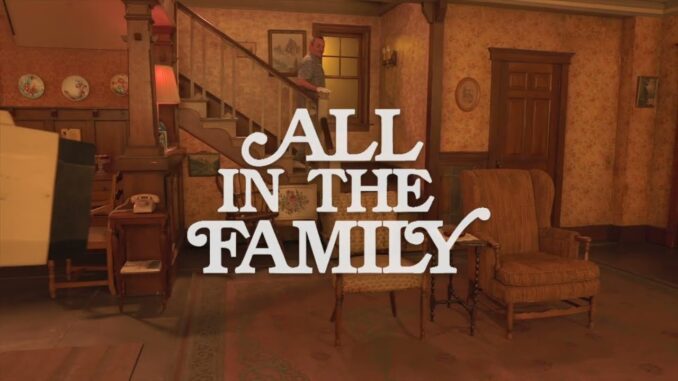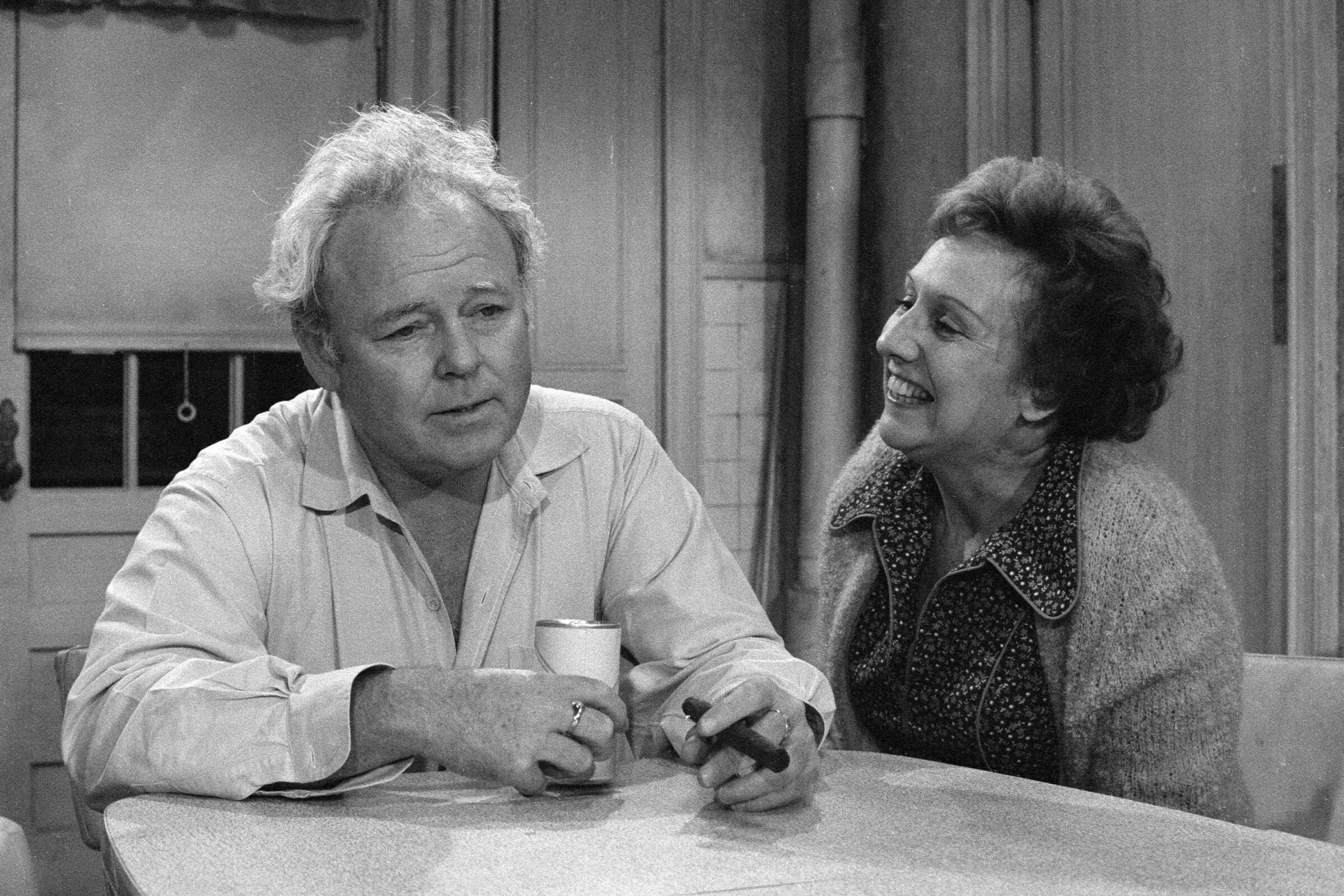
If you’ve ever wondered what life was really like for your parents or grandparents when they were young, you don’t need a history book — you just need an episode of All in the Family. This groundbreaking sitcom, which first aired in 1971, is more than just comedy; it’s a snapshot of a changing America.
Through laughter, arguments, and unforgettable characters, All in the Family captures the spirit, struggles, and social tensions of the 1970s. It’s like peeking through a window into your family’s past — complete with the attitudes, humor, and heart that shaped an entire generation.
The World Before Smartphones and Streaming
Life in the 1970s
Imagine a world without social media, cell phones, or binge-watching. Families gathered around one television, usually in the living room, to watch shows together. All in the Family became a weekly ritual for millions — including your grandparents.
The show reflected the real world: factory jobs, rising costs, social movements, and generational clashes. It was life, unfiltered, and everyone could see a little bit of themselves in the Bunkers.
A Family That Felt Familiar
At its core, the Bunker household — Archie, Edith, Gloria, and Mike — looked a lot like every other American family of the time. They loved, they fought, they disagreed — often loudly — but they stayed together. That’s why your grandparents related to them so deeply.
The Characters Who Defined a Generation
Archie Bunker — The Stubborn Father Figure
Archie Bunker, played by Carroll O’Connor, was the embodiment of the old-school working man. He was opinionated, conservative, and set in his ways. His slang-filled rants against change reflected the fears of many older Americans watching the world transform around them.
But underneath his bluster, Archie was deeply human — trying to protect the values he believed built the country.
Edith Bunker — The Heart of the Home
Jean Stapleton’s Edith was the glue that held everything together. Her kindness and patience balanced Archie’s temper. For many viewers — especially grandmothers — Edith represented the emotional strength women brought to families during challenging times.
Mike “Meathead” Stivic and Gloria
Rob Reiner as Mike and Sally Struthers as Gloria symbolized the new generation. They were college-educated, socially conscious, and ready to challenge the old rules. Their debates with Archie mirrored the generational arguments happening across America — from the dinner table to the streets.
Why the Show Still Matters Today
A Reflection of Real Conversations
Every episode felt like an honest conversation — the kind your grandparents might’ve had after dinner. Race, gender, war, and politics were fair game. The show didn’t tiptoe around controversy; it embraced it.
That’s why All in the Family remains timeless. It helps younger generations understand how people thought, argued, and adapted in a rapidly changing world.
Humor That Spoke Truth
Even while tackling heavy topics, the show was funny. Archie’s blunt remarks, Edith’s innocent comments, and Mike’s fiery comebacks made people laugh while forcing them to think. Humor became the bridge between generations — a lesson in how laughter can open minds.
The America Your Grandparents Knew

Social Change in the Air
When All in the Family premiered, the U.S. was in turmoil. The Vietnam War, the Civil Rights Movement, and the Women’s Liberation Movement were redefining what it meant to be American.
Archie’s resistance to these changes represented millions of older Americans struggling to adjust — people like your grandparents who were watching their world shift before their eyes.
From Factories to Feminism
Edith’s subtle empowerment over the years reflected how women’s roles were changing. Gloria’s independence, meanwhile, showcased the rise of modern feminism. Watching these storylines today reveals how far — and how fast — society was moving at the time.
The Power of Generational Understanding
A Show That Spoke Every Family’s Language
What makes All in the Family so powerful is how relatable it still feels. Every family has its Archies — traditional, opinionated figures who fear change — and its Mikes — young idealists pushing boundaries.
By watching the show, you can better understand not just your grandparents’ world but their mindset. Why they valued certain things. Why they reacted the way they did. Why they sometimes clashed with your parents.
From the Bunkers to Your Own Family
Think of the show as a mirror reflecting generational gaps that exist even today. Maybe your parents rolled their eyes at your grandparents the way Mike rolled his at Archie. Or maybe you’ve had your own “Bunker moment” during a family debate. That’s what makes the show eternally relevant.
Lessons Hidden in Laughter
Accepting Change (Even When It’s Hard)
Archie Bunker didn’t like change — but over the years, he slowly adapted. That’s a lesson many people from older generations lived firsthand. The world they grew up in looked nothing like the one their children inherited.
Watching All in the Family helps you see that process — the awkward, funny, painful evolution that every generation goes through.
Love Beyond Differences
Despite constant arguments, the Bunkers loved one another deeply. It’s a reminder that family love doesn’t always mean agreement — sometimes, it means patience, listening, and finding humor in disagreement.
The Historical Value of “All in the Family”
Television as a Time Capsule
Each episode of All in the Family captures a piece of history — whether it’s about the economy, politics, or gender roles. Watching it now is like flipping through a living scrapbook of the 1970s.
The Show That Changed Television Forever
Norman Lear’s masterpiece transformed the sitcom genre. Before it, TV avoided controversial subjects. After it, shows like The Jeffersons, Maude, and Good Times began tackling real-world issues too. It opened the door for more honest storytelling.
How to Watch It Today
Enjoy It Like They Did
Try watching an episode with your parents or grandparents. Ask them what they remember from that era. Chances are, the discussions will surprise you — and maybe even bring your family closer.
Reliving the Past Through Television
Streaming platforms and classic TV networks now make it easy to revisit All in the Family. But don’t just watch it for laughs — watch it for understanding. Every joke, every argument, every awkward pause tells you something about where your family came from.
Why Young Viewers Should Care
Connecting Generations Through Storytelling
For younger generations, All in the Family isn’t just an old sitcom — it’s a living history lesson wrapped in laughter. It shows how people communicated before technology, how they handled differences, and how humor helped them survive turbulent times.
The Timelessness of Family Conflict
Generational clashes never go away — they just evolve. Today’s debates over technology, identity, and values are the same ones Archie and Mike had — just updated for the modern world. Watching the show can make you realize that history doesn’t repeat; it just rhymes.
The Emotional Legacy of the Bunkers
Why They Still Feel Real
Even decades later, the Bunkers feel like family. Their laughter, their tears, and their stubbornness reflect the timeless emotions that bind every generation together.
A Bridge Between Eras
When you watch All in the Family, you’re not just learning about your grandparents’ time — you’re experiencing their emotions. Their fears, their hopes, their humor. It’s a bridge connecting you to them in the most human way possible.
Conclusion: Rediscovering Your Family Through Television
All in the Family isn’t just an old show — it’s a guide to understanding where you came from. It lets you step into the shoes of your parents and grandparents, to see the world as they did — full of change, confusion, and courage.
So next time you want to connect with your family’s past, don’t just ask questions — watch an episode. Because sometimes, the best way to understand history is to laugh through it.
